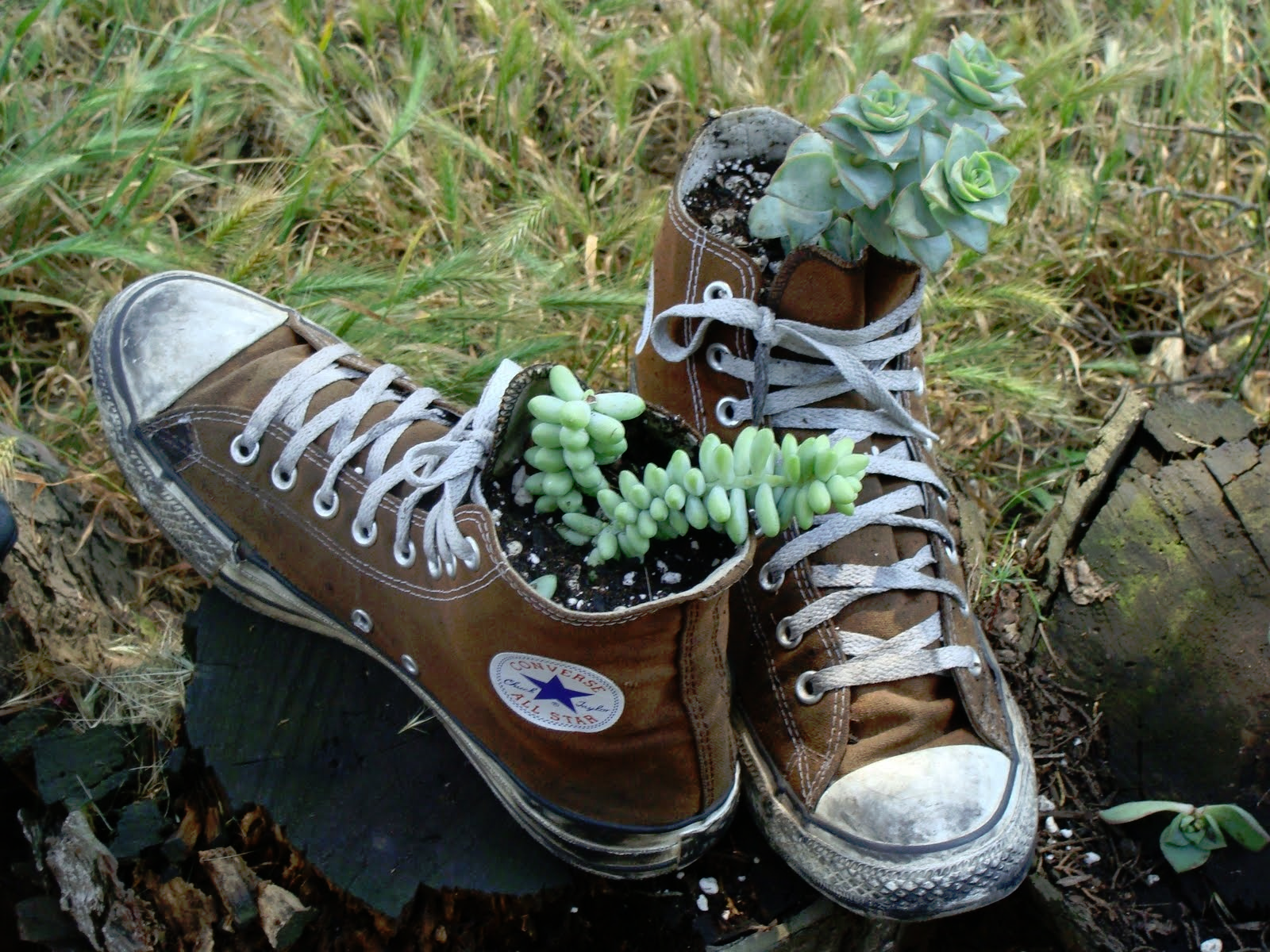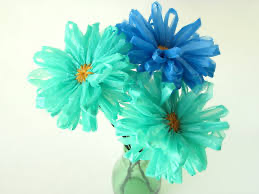
Most households throw many things away. But a lot of the things that get tossed could be used to make something else. Scroll down to see how you can reduce the amount your family throws away each week.
REUSING HOUSEHOLD OBJECTS
Plenty of things that are thrown away every day that can absolutely be reused. Being able to reuse something is often even better for the environment than recycling it. Next time you’re about to throw something away, here are some ideas to get you thinking creatively about what you could do instead!
MAKE A PLANTER
Just about anything (aside from treated wood and plastics) can be made into a planter. As long as you can make holes in the bottom for water to drain out you should be able to fill an old household object with dirt and give it a second life as a planter.
Watch Jake turn a shoe into a planter!
DONATE OR GIVE THINGS AWAY
Try to give away things that are still working. If you’re getting rid of a household item that can still be used, it can probably be saved from a landfill by simply seeing if anyone in your area will take it. Websites like Craigslist and Facebook marketplace allow you to create an online listing where people in your area can see that you’re giving something away for free.
Do you have clothes you no longer wear? If they’re still in good enough condition for someone else to use, donate them to Goodwill, Salvation Army, or other resale shop. Are they too worn out to be worn? Cut them up and use them as rags for cleaning instead of using paper towels or disposable wipes that fill up landfills. Or get creative and sew the scraps into a quilt. Two options are below!
REDUCE PLASTIC WASTE
Plastic makes up a large amount of our waste. About 80% of plastic waste ends up in landfills or the natural environment, including the ocean. The Great Pacific Garbage Patch is a collection of litter in the middle of the ocean. Plastic doesn’t break down easily, and ocean currents bring much of the waste to the same place. There, the debris floats together, harming the ecosystem.
Here are some ways you can reduce your contribution to landfills.
- If you can, use reusable bags at the grocery store. Paper bags are a great option if they’re available too! Paper is recyclable, while plastic bags are not.
- Make sure to return plastic bottles to get the deposit
- If you have a lot of plastic bags lying around, that’s okay! Get creative!


REDUCE HOW MUCH YOU BUY
The easiest way to consume less is to use what you already have. Here are some tips!
MAKE YOUR OWN ALL-PURPOSE CLEANER
It’s really important to keep your house clean, but you don’t need to buy cleaners with ingredients that are harmful to the environment. Here’s a video that shows you how to make your own cleaner from food waste. It’s really easy; all you need is citrus peels, vinegar, and a jar!
TRY NOT TO WASTE FOOD
Why does produce go bad?
Fruits and vegetables go bad for many reasons: air, moisture, light, and microbes. Photodegradation happens when something is changed when it is exposed to light. This can happen in produce that is left out for too long. Photodegradation in fruits and vegetables causes them to lose their flavor, vitamins, and proteins.
Microorganisms may also be to blame. Bacteria, yeast, and mold need water to survive. Fruits contain lots of water, so these microorganisms may use your produce as a water source, which can cause rotting.
How to prevent food from going bad
Make your fruits and vegetables last longer, so you don’t have to throw them away.
If possible, hang your banana bunch up! Bananas emit ethylene gas to ripen themselves. Hanging them up allows for more circulation so they are exposed to less ethylene.
Store your potatoes in a cool, dry, dark place. Sunlight and moisture encourage sprouting. Making sure potatoes are kept dry in a dark place can make them last longer.
Wrap leafy vegetables in paper towels and put them in plastic bags.
Almost all fruits and vegetables should be stored between 35 and 40 Fahrenheit (in the fridge). Some produce, such as bananas, potatoes, onions, garlic or fruits that are not ripe yet should be left out.
What to do with food that’s about to go bad
Many fruits and vegetables that have gotten less fresh can still be used. When bananas have started to turn brown and soft they can still be made into banana bread. Veggies like cucumbers, carrots, and peppers can be pickled. Tomatoes that have gone soft can be made into pasta sauce. Click the button to find recipes you can use with fresh food that’s starting to turn.
If you wait too long to eat your fresh food, use it for compost. Compost means letting organic material like food decompose after it goes bad to become fertilizer for your garden next year. Visit our composting pages to learn more!
The average household will throw away almost ⅓ of the food they buy every year. So anything that can be done to reduce that is good. Food can also go bad sooner than you think, the article right below this one lists a bunch of foods that tend to go bad fairly quickly.


The Graham Scholars Program supports 50 undergraduate juniors and seniors at the University of Michigan Ann Arbor campus annually. The co-curricular program complements many academic programs. Scholars work with organizations through summer internships and sustainability projects that provide an opportunity to refine project management, collaboration, and other skills applicable to all career paths. The Scholars Program is open to all schools and colleges and is supported by the University of Michigan Graham Sustainability Institute, see graham.umich.edu/scholars.

